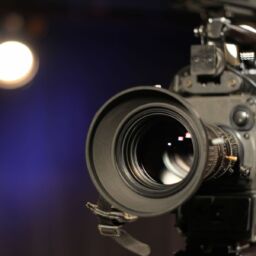
It’s time to talk about video again, and this time we’re taking a look at something a lot of people know, most everyone has seen, but few understand just how important it is. B-Roll! There have been countless times I have seen the schedule for a shoot day that allows for hours upon hours for interviews, leaving only a few moments between to capture it. While it’s not the end of the world, it can certainly be the difference between a decent video, and a great one. Today let’s discuss the importance of B-Roll.
The first step is understanding what B-Roll actually is. Thankfully we’ve covered this basic topic in our FAQ Series. But for those who haven’t seen our helpful video, here are some of the basics. If you consider your interviews or primary diving portions of a narrative as your A-Roll everything that you cut away to would be your B-Roll.
For example, in a video discussing teachers and staff and how they create meaningful impact and relationships with the students, you may have a lot of great interviews with staff, administrators, educators, parents, and students. These give us a fantastic insight into multiple perspectives, but they don’t show us anything.
Video inherently plays by the fundamental rule of “show, don’t tell.” Obviously it’s good to have exposition if you’re planning to have dialogue in your project, but we connect more with well-framed and coordinated shots exemplifying what is being said. Which sounds more engaging? 25 seconds of someone speaking about why a teacher is doing a great job, or 8-10 seconds of speaking with the last 15 seconds composed of multiple shots showing a teacher in their classroom interacting with kids? Simply reading that should suffice to explain why B-Roll is important. It creates visual engagement for your audience.
But let’s take a dive into the world of editing. It’s a world I’ve been living in professionally for over a decade. B-Roll plays a very important role for me when putting the pieces of a video together. I look to it for the emotional connection and the visual interest in any project, but I use it for far more practical purposes as well.
Here’s an example; a person answering an interview question may have a very good answer, but it would work better without a long, winding tale in the middle, or perhaps I like the start of one answer, but want to pair it with the end of another. This could be done with a simple punch-in (digitally zooming in on the speaker), as it draws attention to itself. It’s a deliberate visual which the audience is keenly aware has taken place.
If I can cover the speaker entirely with B-Roll which is relevant to the topic being discussed, I can take multiple clips, perhaps minutes or even days apart, cut them together, and the audience would never know when we cut back to the speaker, it’s a different take. This happens more than anyone might ever know in the world of video production. When editing, I know I’ve done my job well when no one notices my work!
I want to raise awareness on the importance of allocating time in the day for this incredibly important facet of the production process. If you’re reading this, there’s a very good chance you yourself are in the production field, or are looking for a talented crew to work with.
Taking the time to acquire good B-Roll takes…(you guessed it) time. While it’s great to move quickly to get some good shots, the more options and locations and true action shots you have the more likely you are to have meaningful content. So keep the following in mind when you’re planning your shoot days:
- Schedule interview days when your facility would be good to shoot.
- Allow ample time for filming B-Roll relevant to your video.
- How long is your video intended to be? The longer it is, the more B-Roll you’ll want.
- Be mindful of possible complications: Some students may need release forms or construction may make areas look unsightly, etc.
- Some types of B-Roll may take a long time to film by themselves, such as drone footage.
- More is always better! Always plan as much time as your schedule allows.
Ultimately your project will dictate how much B-Roll you’ll need. Some videos may not require much, if any, though I would say these cases are a rarity. When planning your day, make sure you allow time to capture these moments at opportune times. It may need to be staged, or perhaps you can capture it naturally. Either way, it plays a vital role and it should be thought of just as important as a good interview.
Now you have some insight to help make a more engaging video. But if you want more information, or are looking for a talented crew to bring your vision to life, reach out to the Media Services Team at CIESC. With years of production experience, and skills that allow us to work efficiently and effectively, we will be there every step of the way on your road to success. Reach out to us by email at video@ciesc.org, or call 317-550-2228.


